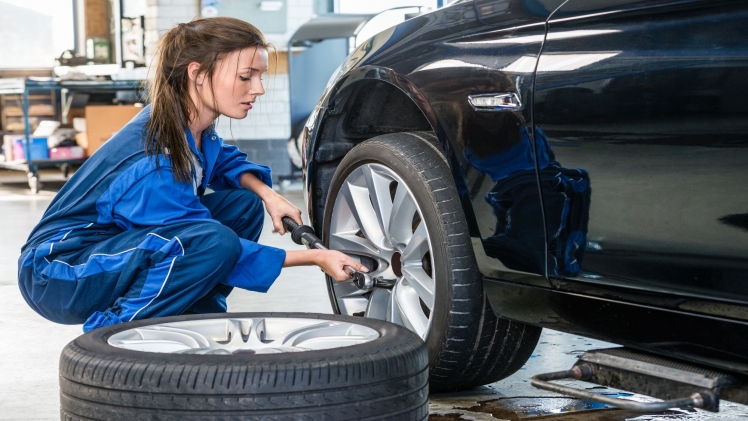1. The tire is punctured
Despite being resistant and able to withstand some types of shocks and stresses, the tires can puncture. In the event of a puncture, have the tire examined by a specialist who, once the tire has been removed from the wheel and thoroughly inspected internally, will be able to assess whether it has suffered irreparable damage.
2. The legal usury limit has been reached
But beware: since there is a legal limit of 1 mm, this limit prevails over the technical one and, when it is reached, the tires must be changed. If you wait any longer, the tires are no longer able to offer safety, grip and performance, especially in the wet and you risk penalties.
3. The tires show signs of aging
It is difficult to predict the life span of a rubber because it is not related to its manufacturing date. Tires may show signs of aging even if never used or used only infrequently. Their duration depends on various factors: climatic conditions, storage and use, load, speed, pressure, maintenance, driving style.
Spend a few minutes on your tires regularly to identify any external signs of aging or wear: deformations or cracks on the tread, shoulder and sidewalls …
Have a specialist check regularly if the tires are still fit for use.
The 5 year check … before it’s too late!
After 5 or more years of use, it is recommended that you have your tires checked annually by a specialist. If they need to be changed, follow the manufacturer’s recommendations and the indications contained in the vehicle booklet regarding the permitted tire sizes. As a precaution only, even if they appear to be in good condition and the tread has not yet reached the wear limit, change the tires 10 years after their date of manufacture.
4. The tire is damaged
- Sidewalks, potholes and blunt objects can seriously damage a tire. Any punctures, tears or deformations must be carefully examined by a specialist, who will be able to determine if the tire can be repaired.
As a general rule, never travel with a flat or damaged tire. - In which cases is it not possible to repair a tire?
- Perforations on the sides
- Visible or deformed headband
- Separation or deformation of the tread rubber
- Belt or carcass visible under the tread or on the sidewalls due to wear
- Damage due to greasy or corrosive substances
- Abrasions or veins of the internal calendering caused by use in conditions of insufficient pressure
5. The tire has abnormal wear
An abnormal tread wear (localized in some points, in the center or on the shoulder) is often a sign of a mechanical problem (worn shock absorbers, transmission, fixings, etc.) or of incorrect wheel balancing. It can also result from incorrect inflation pressure.
To prevent uneven wear, have your wheel balance checked every six months. This will allow you to extend the life of the tires and drive more comfortably. Regardless, the tires may wear out more quickly than those of another motorcycle used in the exact same way.
In this case, contact your trusted Mobile Tyres Home Service.
6. The tires are not suitable for your vehicle
Choose tires in compliance with legal regulations and technical specifications indicated by the vehicle manufacturer. For best performance, use front and rear tires with identical sculptures. Using different tires by model, structure, tread pattern and level of wear can alter the balance and stability of the vehicle. Except for exceptions specified by the motorcycle manufacturer, never mount a radial and a non-radial tire on the same vehicle.

